Motory Coordination
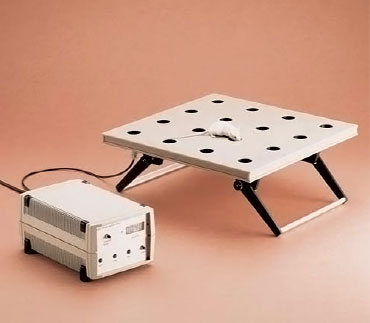
HOLE BOARD
Cat. No. 6650
The Hole Board has been conceived to study the
behaviour of the mouse confronted with a new environment
(head plunging stereotype) according to the
method devised by Boissier-Simon.
The test enables the initial exploratory activity of the
animal and its variations brought about by psychotropic
drugs to be unmistakably assessed.
The recording takes place automatically, via miniature
I.R. emitters/receivers embodied in the "holes" of
the board.
Print-out via the optional 2600 Multifunction printer.
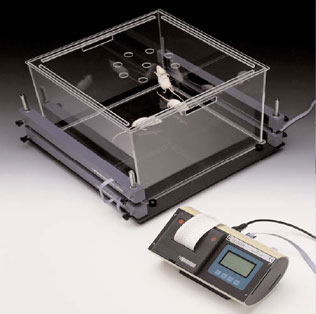
ACTIVITY CAGE
Cat. No. 7420
The 7420 Activity Cage has been proved of
great value to record spontaneous co-ordinate
activity in rats and mice (individual or groups)
and variation of this activity in time.
The I.R. Beam Array Cage 7420 consists of a
cubicle of clear Perspex: two facing blocks
containing an I.R. array record the horizontal
activity.
A similar System assesses the vertical activity
(rearing). Print-out via the optional 2600 multifunction
Printer.
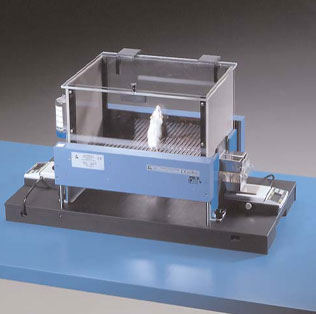
FEEDING AND ACTIVITY ANALYSER
Cat. No. 47452/47453
The Feeding and Activity Analyser has been conceived
for studying the feeding behaviour and the spontaneous
co-ordinate activity (via the optional activity sensors)
of rodents and their alteration brought about by a
number of factors, in investigations about:
• the drugs which produce anorexia
• the addiction/aversion to particular substances
• the thirst arousing and quenching mechanism
• the feeding habits and their modification
The 47452 is designed for one rat; the 47453 is dimensioned
for the mouse. The cages route their digitized
signals through an electronic unit to a PC for acquisition
and analysis via the Cage Monitoring Software (CMS).
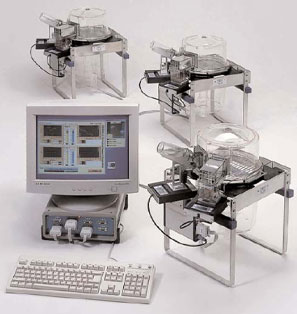
METABOLIC CAGE
Cat. No. 41700
The well-engineered TECNIPLAST Metabolic Cages
supply uncontaminated samples of effectively separate
urine and faeces of the rodent. All their components
are designed for simplicity of operation and total
part interchange ability. Four models are available for
either rats or mice. Now this remarkable cages are
available complete with arrangements for accurate
record of food and water consumption. The cages
route their digitized signals through an electronic unit
to a PC for acquisition and analysis via the Cage
Monitoring Software (CMS). The coordinate ambulatory
activity and "rearing" of the rodent on test, can be
measured via the optional I.R. Motion detector.
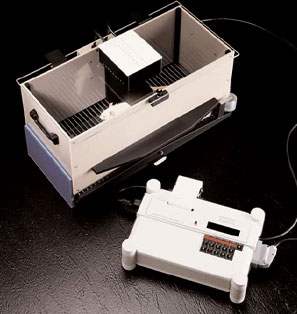
AUTOMATIC REFLEX CONDITIONER
Cat. No. 7530
This fully automated apparatus is designed to study
conditioned reflex (avoidance reaction)in rats and
mice. Two types of cages are available, 7532 designed for
rats and 7533 for mice. Each cage is provided with
acoustic and visual stimulators, which supply conditioning
stimuli.
The "reinforcement" consists of an electrical stimulus
applied to the floor bars of the cage by a special "static scrambler" circuit.
Trial by trial digital and analogical graphics is provided
by micro-controlled circuit.
Direct connection to the PC via the 52010 Win-DAS
software.
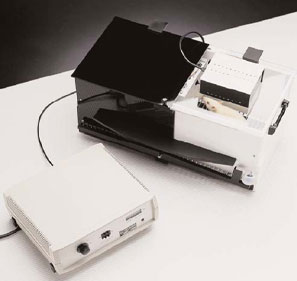
PASSIVE AVOIDANCE APPARATUS
Cat. No. 7550
This friendly to user Passive Avoidance Apparatus
which ensures reliability of functions and result
reproducibility, exploits the tendency, quite strong in
rodents, to escape from an illuminated area into a
dark one (step-through method).
It helps in several areas of research: Behaviour
genetics, psychopharmacology and behavioural
toxicology.
Two cages are available, one for Rats Cat. 7552 and
one for Mice Cat. 7553.
A Passive Avoidance Set-up, step-down method,
Cat. No. 7570, is also available for mouse. Print-out
via the optional 2600 Multifunction Printer.
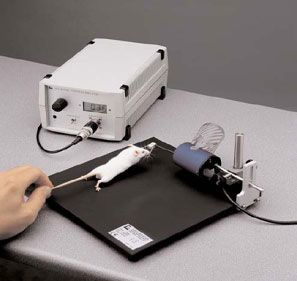
GRIP STRENGHT METER
Cat. No. 47105/47106
The 47105 Grip Strength Meter measures forelimb
grip-strength in rats. the similar 47106 is dimensioned
for the mouse. The effects of drugs, toxins,
muscle relaxants, disease, ageing or neural damage
on muscle strength may be assessed. The animal is
placed over a Perspex plate, in front of a grasping
bar; rodents instinctively grab anything they can to
try to stop this involuntary backward movement,
until the pulling force overcomes their grip strength.
After the animal loses its grip, the peak preamplifier
automatically stores the peak pull force and shows it
on a liquid crystal display. The data supplied by the
peak amplifier are available in analogue form.
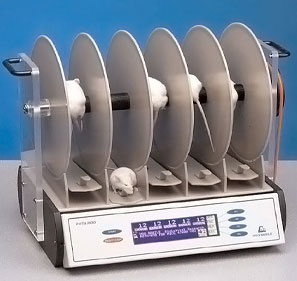
ROTA-ROD TREADMILLS
Cat. No. 47600
The "Rota-Rod" technique has proved to be of great
value in research involving screening of drugs which
are potentially active on motory coordination. Ugo
Basile Rota-Rods are the result of many years of
research in co-operation with the latest development
in behavioural and pharmacological research. The 47600 new micro-processor controlled Rota-
Rod for mice and the 47700 for rats replace both
previously available constant speed and accelerating
models and features direct PC output.
|